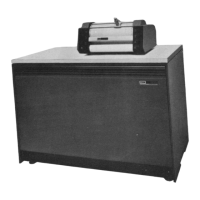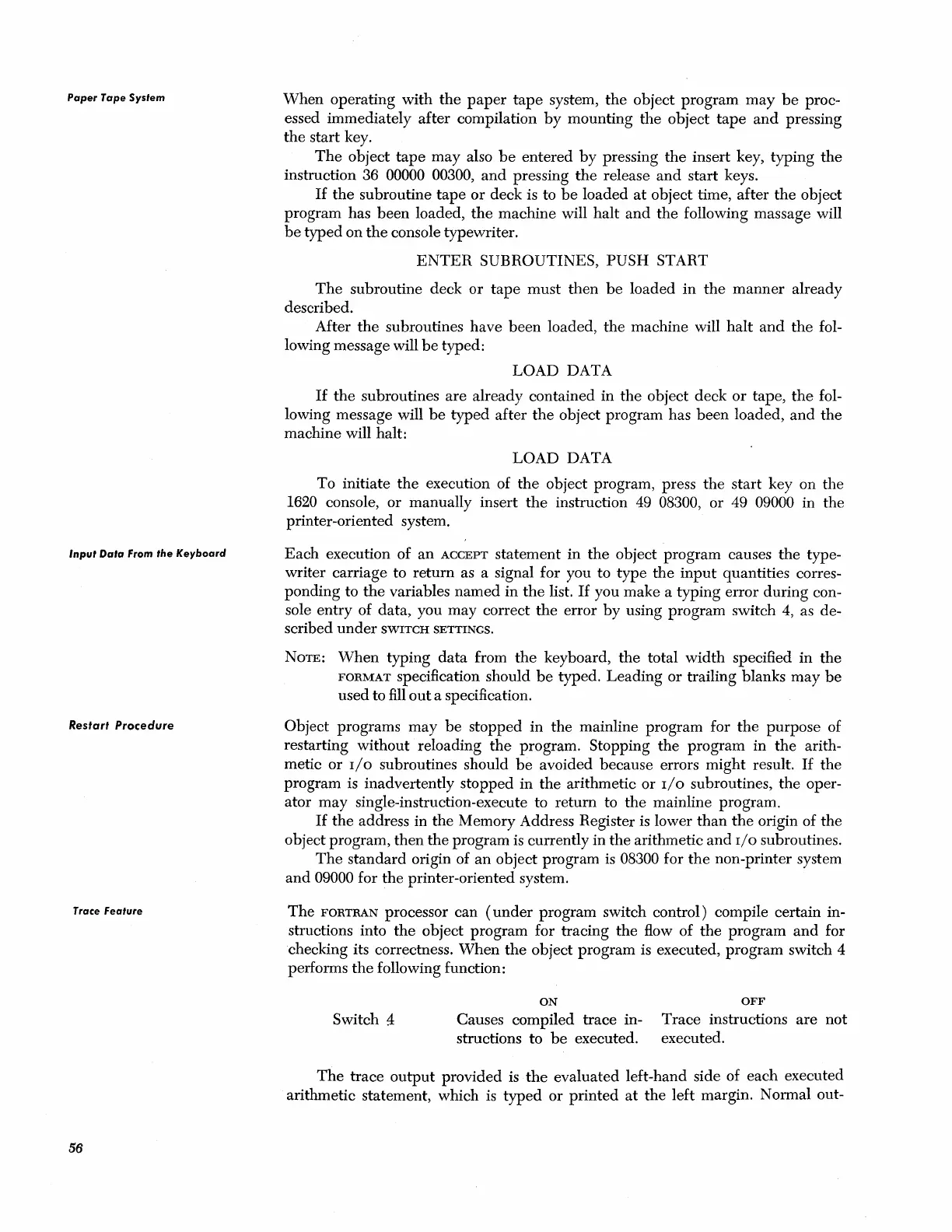Paper
Tape
System
Input
Data
From the
Keyboard
Restart
Procedure
Trace
Feature
56
When
operating
with
the
paper
tape
system,
the
object program
may
be
proc-
essed immediately after compilation
by
mounting
the
object
tape
and
pressing
the
start key.
The
object
tape
may
also
be
entered
by
pressing
the
insert key, typing
the
instruction 36 00000 00300,
and
pressing
the
release
and
start
keys.
If
the
subroutine
tape
or
deck is to
be
loaded
at
object time, after
the
object
program has
been
loaded,
the
machine will haIt
and
the
following massage will
be
typed on
the
console typewriter.
ENTER
SUBROUTINES,
PUSH
START
The
subroutine deck
or
tape
must
then
be
loaded
in
the
manner
already
described.
After
the
subroutines
have
been
loaded, the machine will
halt
and
the
fol-
lowing message will
be
typed:
LOAD
DATA
If
the
subroutines are already contained in
the
object deck
or
tape,
the
fol-
lowing message will
be
typed
after
the
object program has
been
loaded,
and
the
machine will halt:
LOAD
DATA
To initiate
the
execution of
the
object program, press
the
start
key on the
1620 console,
or
manually insert
the
instruction
49
08300, or 49 09000 in the
printer-oriented system.
Each
execution of
an
ACCEPT
statement in
the
object program causes
the
type-
writer carriage to
return
as a signal for you to
type
the
input
quantities corres-
ponding to
the
variables
named
in
the
list.
If
you make a typing
error
during con-
sole entry of data, you may correct
the
error
by
using program switch 4, as de-
scribed
under
SWITCH
SETTINGS.
NOTE:
When
typing
data
from
the
keyboard,
the
total
width
specified in
the
FORMAT
specification should
be
typed.
Leading
or
trailing blanks
may
be
used to fill
out
a specification.
Object programs
may
be
stopped in the mainline program for
the
purpose of
restarting without reloading
the
program. Stopping
the
program in
the
arith-
metic
or
110
subroutines should
be
avoided because errors
might
result.
If
the
program is inadvertently
stopped
in
the
arithmetic
or
110
subroutines,
the
oper-
ator
may
single-instruction-execute to return to
the
mainline program.
If
the
address in the Memory Address Register
is
lower
than
the
origin of the
object program, then
the
program
is
currently in
the
arithmetic
and
I/O subroutines.
The
standard origin of
an
object program
is
08300 for
the
non-printer system
and
09000 for
the
printer-oriented system.
The
FORTRAN
processor can
(under
program switch control) compile certain in-
structions into
the
object program for tracing
the
flow
of
the
program
and
for
checking its correctness.
When
the
object program
is
executed, program switch 4
performs
the
following function:
Switch 4
ON
Causes compiled trace in-
structions to
be
executed.
OFF
Trace
instructions
are
not
executed.
The
trace
output
provided
is
the
evaluated left-hand side of each executed
arithmetic statement, which
is
typed
or
printed
at
the left margin. Normal out-

